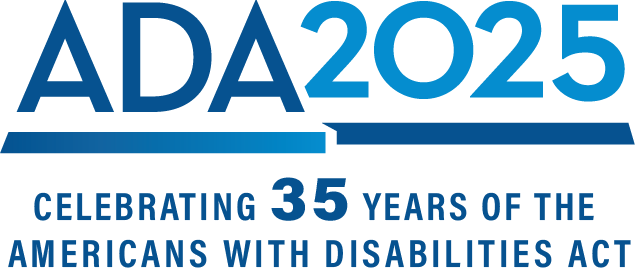Origins of the ADA
The signing of the Americans with Disabilities Act (ADA) was a watershed event in modern U.S. history. This series of webpages explores some of the key events that led to its creation and passage. Through the videos posted throughout this narrative, you can hear this amazing story directly from a few of the many people who helped make it happen — in their own words.
During the 1980s, many in the United States — leaders of the disability and rights movements, members and staff of the U.S. Congress, and those in the federal government’s civil rights agencies — concluded that there was a need for additional civil rights legislation for people with disabilities. The advances created by Section 504, one of the civil rights provisions of the Rehabilitation Act of 1973, marked the first time that the exclusion and segregation of people with disabilities were seen as stemming from discrimination. However, many segments of American life were not covered by the Rehabilitation Act’s nondiscrimination law, Section 504, did not apply to entities that did not receive federal funds, businesses without federal contracts, most private businesses, many employers, telecommunications, and many forms of transportation. Many small health care providers, particularly individual doctors' offices, also were not covered by Section 504 — either because they did not receive federal funds (as defined by the regulation) or were exempted by a small-provider exception.
The National Council on Disability (NCD), then known as the National Council on the Handicapped, is an independent federal agency created to make recommendations to the president and Congress on policies affecting Americans with disabilities. Under the leadership of then-Executive Director Lex Frieden, NCD released a report in February 1986 titled “Toward Independence: An Assessment of Federal Laws and Programs Affecting Persons with Disabilities - With Legislative Recommendations.” With that report and additional input and written comments from presidentially appointed NCD members like Dr. Michael Marge, NCD's consultant attorney, Robert Burgdorf, drafted the first version of the ADA. This report called for a comprehensive law to provide full opportunities and empowerment for people with disabilities in the United States.
In April 1988, in the 100th Congress, Senator Lowell Weicker of Connecticut and Senator Tom Harkin of Iowa introduced the legislation envisioned by NCD: S.2345, the Americans with Disabilities Act of 1988. S.2345 included an expansive civil rights policy. After its public hearing, the proposal — a first legislative step — focused attention on the need for comprehensive legislation. It became the blueprint for the ADA and started the momentum for future legislative action.
United States Representatives Tony Coelho of California and Silvio Conte of Massachusetts introduced H.R.4498, the House version of the Americans with Disabilities Act of 1988. Senators Weicker and Harkin, Representative Coelho, and several other senators, representatives, and advocates testified about discrimination based on disabilities during hearings on the ADA in September 1988, including this rare joint session of both the House and the Senate.
Justin Dart, then one of the presidentially appointed members of NCD, took a leading role in building support for this proposed new law. He traveled to all fifty states, bringing together people with disabilities and compiling evidence of the difficulties and discrimination that they faced in their everyday lives. They created a record of the conditions faced by people with disabilities in the United States, which came to be known as the “discrimination diaries.” The records created by the hearings and the individual discrimination diaries were eventually delivered to Congress and formed an evidentiary basis for the ADA.
In 1988, two other events created significant momentum for the passage of a comprehensive civil rights law protecting people with disabilities. In June, President Ronald Reagan’s HIV/AIDS Commission, chaired by Admiral James D. Watkins, issued a report on the HIV/AIDS epidemic. One of its chief recommendations called for the passage of a comprehensive civil rights law that would protect those with HIV/AIDS as people with disabilities.
Additionally, it was a presidential election year, and then-Vice President Bush was running for president. Prompted by Evan Kemp, a leading disability rights advocate, Vice President Bush made a campaign promise: If elected, he would seek passage of a bill integrating people with disabilities into the mainstream of American life — in effect, a comprehensive civil rights law for people with disabilities, building on the reports of NCD and the HIV/AIDS Commission.

